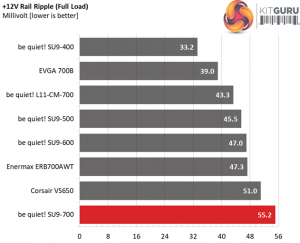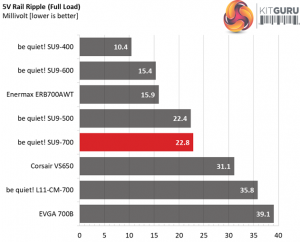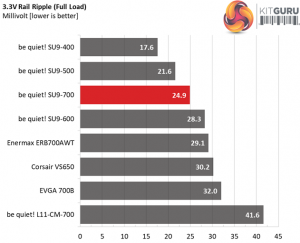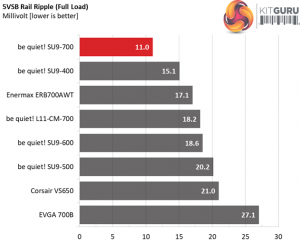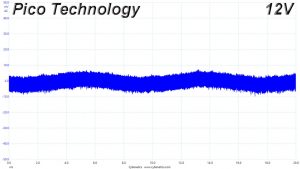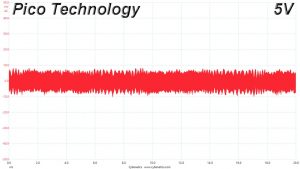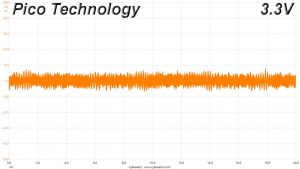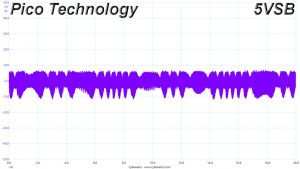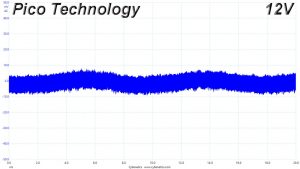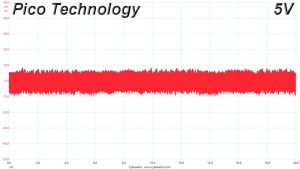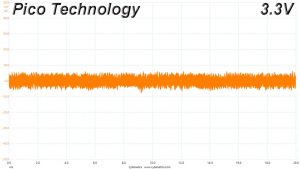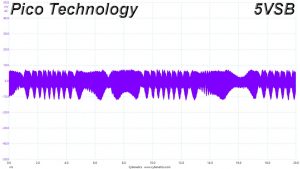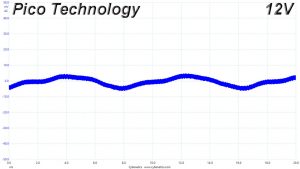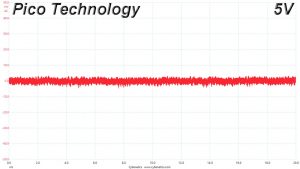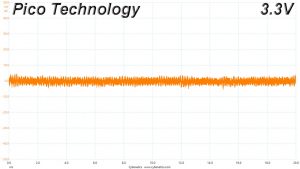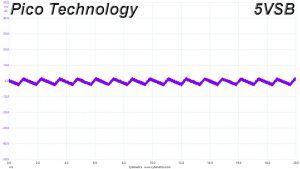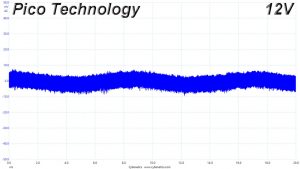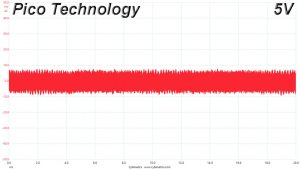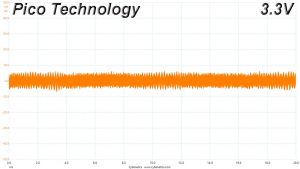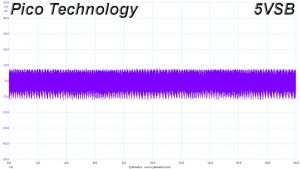To learn how we measure ripple, please click here.
The following table includes the ripple levels we measured on the SU9-700’’s rails. The limits, according to the ATX specification, are 120mV (+12V) and 50mV (5V, 3.3V, and 5VSB).
| Test | 12V | 5V | 3.3V | 5VSB | Pass/Fail |
| 10% Load | 9.6 mV | 6.1 mV | 5.8 mV | 5.2 mV | Pass |
| 20% Load | 13.4 mV | 7.1 mV | 7.1 mV | 6.7 mV | Pass |
| 30% Load | 15.3 mV | 7.6 mV | 7.6 mV | 6.1 mV | Pass |
| 40% Load | 20.5 mV | 8.3 mV | 8.5 mV | 7.3 mV | Pass |
| 50% Load | 25.2 mV | 29.1 mV | 15.5 mV | 9.7 mV | Pass |
| 60% Load | 30.6 mV | 11.7 mV | 11.4 mV | 11.4 mV | Pass |
| 70% Load | 37.3 mV | 12.3 mV | 12.7 mV | 10.0 mV | Pass |
| 80% Load | 43.3 mV | 12.8 mV | 15.5 mV | 10.8 mV | Pass |
| 90% Load | 47.3 mV | 31.6 mV | 24.2 mV | 11.8 mV | Pass |
| 100% Load | 55.2 mV | 22.8 mV | 24.9 mV | 11.0 mV | Pass |
| 110% Load | 65.4 mV | 30.0 mV | 34.1 mV | 13.3 mV | Pass |
| Crossload 1 | 11.4 mV | 11.8 mV | 16.6 mV | 5.7 mV | Pass |
| Crossload 2 | 53.0 mV | 12.5 mV | 11.0 mV | 9.2 mV | Pass |
The ripple suppression is not that good at +12V. We would like to see below 50mV on this rail and ideally less than 40mV. On the minor rails the performance is better.
Ripple Oscilloscope Screenshots
The following oscilloscope screenshots illustrate the AC ripple and noise registered on the main rails (+12V, 5V, 3.3V and 5VSB). The bigger the fluctuations on the screen, the bigger the ripple/noise. We set 0.01 V/Div (each vertical division/box equals 0.01V) as the standard for all measurements.
 KitGuru KitGuru.net – Tech News | Hardware News | Hardware Reviews | IOS | Mobile | Gaming | Graphics Cards
KitGuru KitGuru.net – Tech News | Hardware News | Hardware Reviews | IOS | Mobile | Gaming | Graphics Cards


